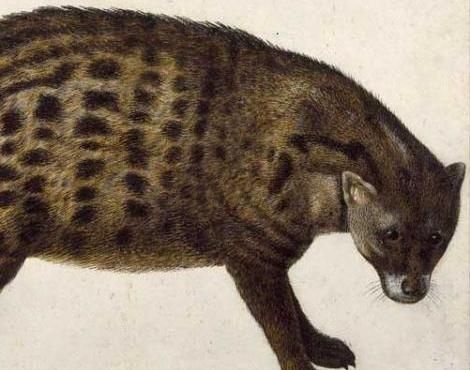
The African Civet is a large species of Civet found across sub-Saharan Africa. The African Civet is the only remaining member in it's genetic group and is considered to be the largest Civet-like animal on the African continent. Despite their cat-like appearance and behaviours the African Civets are not felines at all but are in fact, more closely related to other small carnivores including Weasels and Mongooses. The African Civet is most well known for the musk that it secretes to mark it's territory (called Civetone ), which has been used in the manufacturing of perfumes for centuries, and it's striking black and white markings, make the African Civet one of the easiest Civet species to identify.
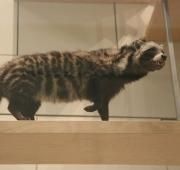
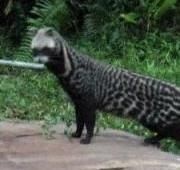
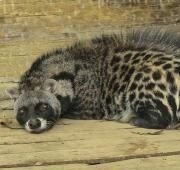
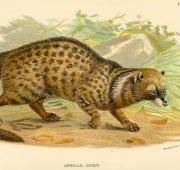
| Kingdom: | Animalia |
| Phylum: | Chordata |
| Class: | Mammalia |
| Order: | Carnivora |
| Family: | Viverridae |
| Genus: | Civettictis |
| Scientific Name: | Civettictis civetta |
| Common Name: | African Civet |
| Group: | Mammal |
| Number Of Species: | 1 |
| Location: | across sub-Saharan Africa |
| Habitat: | Tropical rainforest |
| Colour: | Black, White, Grey, Yellow, Brown, Tan |
| Skin Type: | Fur |
| Size (H): | 43cm - 71cm (17in - 28in) |
| Weight: | 1.4kg - 4.5kg (3lbs - 10lbs) |
| Diet: | Omnivore |
| Prey: | Rodents, Snakes, Frogs |
| Predators: | Lions, Snakes, Leopards |
| Lifestyle: | Nocturnal |
| Group Behaviour: | Solitary |
| Life Span: | 15 - 20 years |
| Age Of Sexual Maturity: | 11 - 12 months |
| Gestation Period: | 60 - 70 days |
| Average Litter Size: | 3 |
| Name Of Young: | Pup |
| Age Of Weaning: | 8 - 10 weeks |



